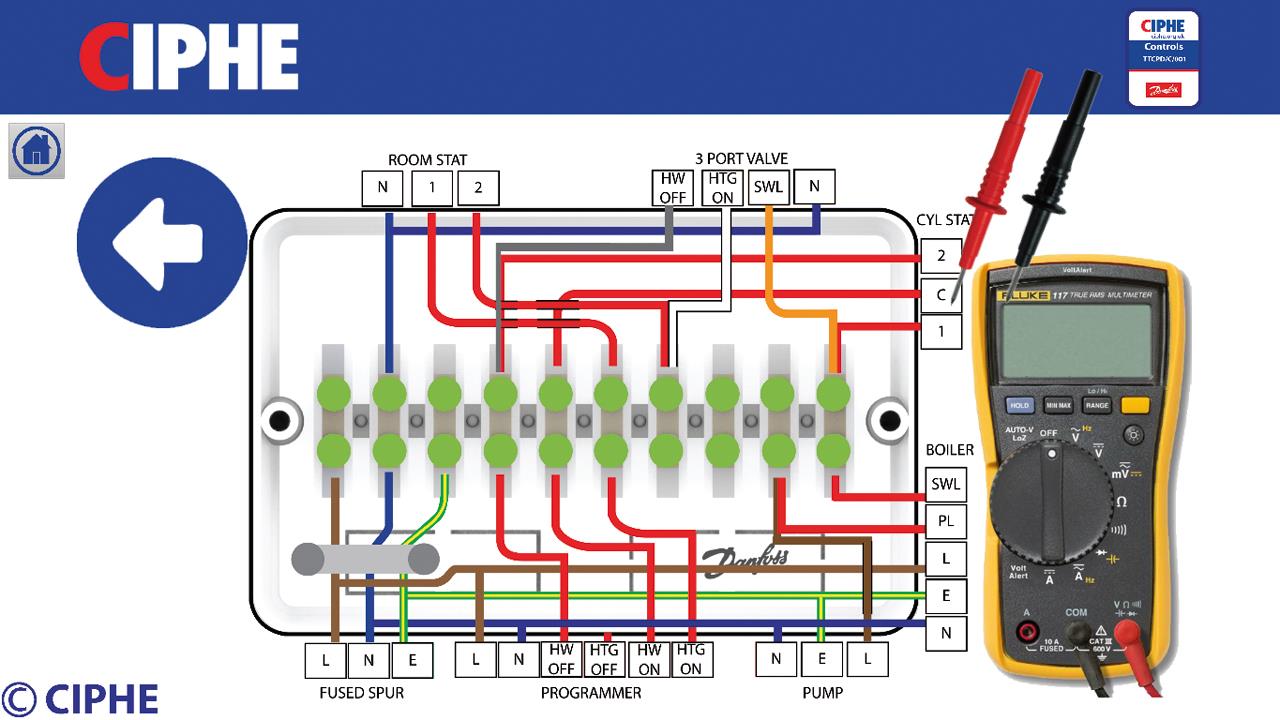


HVP Editor Joe Dart reports on a new fault finding tool from the CIPHE which could prove to be a vital resource for students and professionals alike.
Methods of training for plumbers and heating engineers are changing. In the past, the only way that many could learn would be to either examine a drawing of a system, or get hands-on with it at product training day. But technology is increasingly providing new ways for tradespeople to learn – from YouTube videos to online quizzes and more.
The Chartered Institute of Plumbing and Heating Engineering (CIPHE) has recently developed a new tool which could be an integral part of the next step on the educational journey for plumbers and heating engineers.
The new fault finding tool from the CIPHE replicates real-life heating control installation settings in the form of a handy computer application. The software cover four different controls wiring applications: S Plan, Y Plan, and two further underfloor heating controls configurations used by Polypipe Underfloor.
Using the software, users can interact with each individual component of the heating system, such as the thermostat, pump, and boiler. The tool is simple to use, with a clear, easy to use menu and interface, as well as dynamic, interactive components that respond to the user’s inputs, in order to replicate the experience of the installer on a live installation.
Paul Harmer, Lead Technical Consultant at the CIPHE, said the idea for the fault finding tool came from his previous experience working as an installer. He explained: “I remember how hard it was to get some of that knowledge. I went to a two-day course [to learn a system] and yes, it was great and I got to play around with the wires but then I went home, and I might not touch it for five weeks [and you’d forget].”
He says the tool is pitched as a learning aid that tradespeople can use to both embed and refresh their existing knowledge of these systems. It offers users the ability to test various elements of each system and troubleshoot potential issues.
Extending beyond just individual use, Paul explains that the tool could be valuable teaching resource to plumbing lecturers. For example, students could be tested on particular heating system faults within the software, all without needing to use a live system.
The first version of the tool is designed with desktop computers in mind, but Paul says that the aim is for future iterations to be suitable for mobile technology as well.
The CIPHE unveiled the system for the first time at a recent industry trade show and Paul reports that the feedback for the tool has been very positive so far.
He said: “We’ve already had people emailing in wanting to access it. While I was at the show, someone had already seen something online about it and emailed a colleague about how they could access it.”
There has also been interest from a number of colleges, and Paul reports that a student has even registered an interest in purchasing the tool themselves, which he says was a surprise but a promising sign of interest in the tool from learners.
So, what’s the next step for the CIPHE? The tool is fully developed, with a soft launch to CIPHE members due imminently.
However, the longer term aim is for the CIPHE is to develop similar tools for different work areas, with drainage next on the agenda.
Paul concluded: “Long term, hopefully if we have all these suites of products, it helps show the value of being a member [of the CIPHE].”
If you'd like to keep up-to-date with the latest developments in the heating and plumbing industry, why not subscribe to our weekly newsletters? Just click the button below and you can ensure all the latest industry news and new product information lands in your inbox every week.